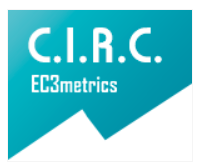Characterization of nasality development in 3-5 year old infants by comparing linguistic and physical-acoustic outcomes.
Caracterización del desarrollo de la nasalidad en infantes de 3-5 años mediante la comparación de resultados lingüísticos y fisicoacústicos
Main Article Content
The following document presents a descriptive type investigative study, that has as purpose to observe, to describe, to compare and to contrast the changes of the nasality since the phonological point of view and physicist in normal subjects that belong to a group of age between the 3 and the 5 years of the Kinder-gardens of the ICBF-BOGOTA and the Kinder-gardens of the National University of Colombia- Bogota, through Gasometer and the application of two batteries of evaluation. In order to contribute new explanations and parameters of utility in the linguistic investigation and in the educational and clinical areas interested in this aspect because the results obtained will permit to do the characterization of the development of the nasality in the development processes in this population of the Spanish Colombian speech.
Downloads
Publication Facts
Reviewer profiles N/A
Author statements
Indexed in
- Academic society
- Bogotá: Corporación Universitaria Iberoamericana
- Publisher
- Bogotá: Corporación Universitaria Iberoamericana
Article Details
Anderson, Raquel. (1996). Nasometric Values for Normal Spanish-Speaking Females: a preliminary report. Cleft Palate Craniofacial Journal, July. Vol. 33. No 4.
Barlow, Jessica (2001). Case Study: Optimality Theory and the Assessment and Treatment of Phonological Disorders. En: American
Speech Language Hearing Association Vol. 32 October.
Barlow, Jessica. (2001). Recent Advances in Phonological Theory and treatmen. En: American Speech Language Hearing Association. Vol. 32, October.
Berry, Bazelton & Sparrow, Jashua (2002). Su hijo: 3 a 6 años: Momentos Claves en su desarrollo emocional y del comportamiento. (Touchpoints Three to Six).
Bosch, Laura (2004). Evaluación fonológica del habla infantil. Barcelona: Masson.
Botma, E.D. (2004). Phonological aspects of nasality: an element-based dependency approach. Netherland: Subfaculty of linguistic and literacy Studies - Uva.
Dinnsen, D.A., Chin, S.B.m Elbert, M. y Powell, T.w. (1990). Some constraints on functionally disordered phonologies: Phonetic inventories and phonotactics. Journal of Speech Hearing Research 33; 28-37.
Goldstein, B., Fabiano, L., Iglesias, A. (2004). Spontaneous and Imitated Productions in spanish-speaking children with phonological disorders. LSHSH, Vol. 35, January; 5-15.
Grunweel, L. (1985). Phonological assessment of Child Speech (PACS). Winsdor: NFERNelson.
Hallé, P.A. y de Boysson-Bardies, B. (1996). The format of representation of recognized words infants’s early receptive lexicon. Infant Behavior and Devel opment.19; 463-481.
Hirschberg J., Bok S. et al. (2005). Adaptation of nasometry to Hungarian language and experiences with its clinical application. International Journal Pediatric Otorhinolaryngol; Oct 21.
Hodson, B. y Paden (1991).Targetting Intelligible Speech. II Edition.
Ingram, David (1985). Trastornos Fonológicos en el niño. Editorial Médica Técnica. S.A.
Jackobson (1940/1968). Lenguaje infantil y afasia. Madrid: Editorial Ayuso.1978. Traducción al español de Chile Language, aplasia and phonological universals. La Haya Mouton.
Jackson y Menaldi. (1992). La voz normal. Ed. Médica panamericana. Buenos Aires.
Pan HH., (2004). Nasality in Taiwanese. Language Speech and Hearing Research. Vol. 47. Pt 3;267-96.
Martínez, Claudia (1995). Análisis de voces para la identificación de personas. Universidad Nacional. Departamento de Terapias, Programa de Fonoaudiología. Bogotá: Colombia.
Montes, José Joaquín (1971). Acerca de la apropiación por el niño del sistema fonológico español. Bogotá: Instituto Caro y Cuervo.
Nichols, Alan (1999). “Nasalence Statistics for two Mexican Populations”;. Cleft Palate Craniofacial Journal, January. Vol. 36. No. 1.
Owens, Robert Jr., (2003). Desarrollo del Lenguaje. Quinta edición. Pearson Educación. Madrid.
Quillis, Antonio (1981). Fonética acústica de la lengua española. Ed. Gredos. Madrid.
Srhiberg, Lawrence & Kwaitokovsky, Joan (1994). Developmental Phonological Disorders. Journal of speech hearing research. Vol. 37, Oct. 94; 1100-1126.
Vihman (1996). Phonological Development. Oxford: Blackwell.
Fonological aspects of nasality.: www.onderzoekinformatie.nl/ en/oi/nod/onderzoek/OND1273551/toon - 13k
Disponible en www. Onderzoekinformatie.nl. site
Disponible en www. Word reference. Com
Dispopnible en www.pubmed.gov
Disponible en www.findarticles.com/p/articles/mi_hb1362/is_200409/ai_n13191798 - 25k.












